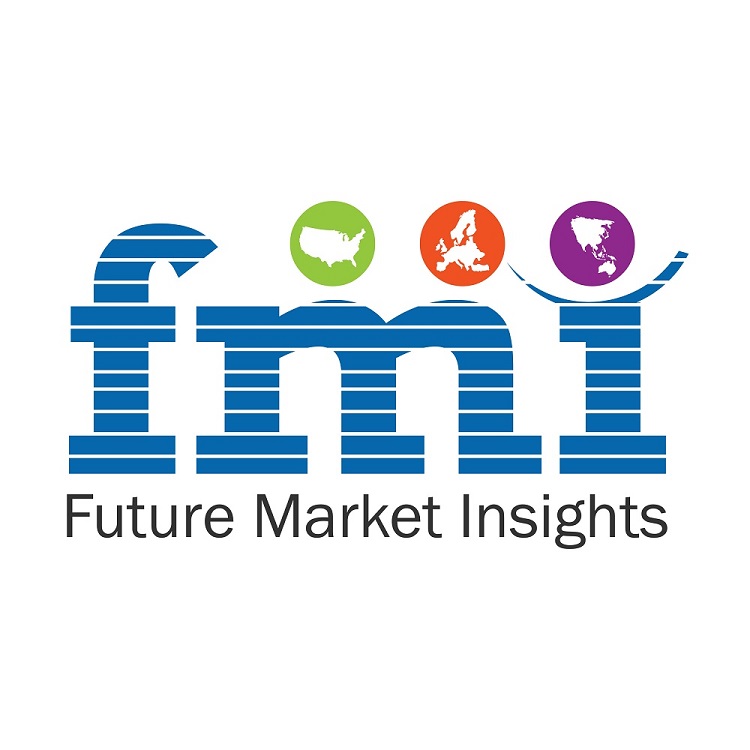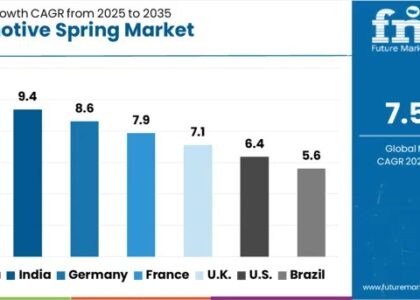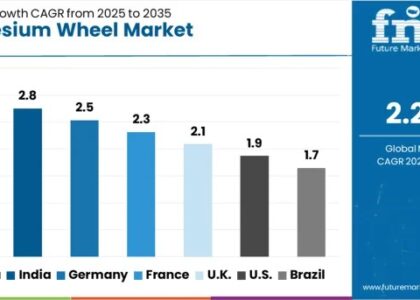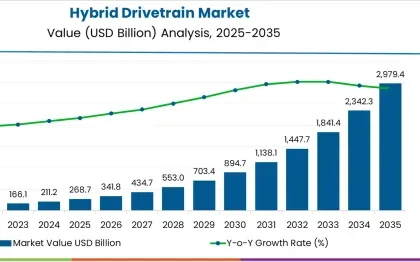
The global Andersen-Tawil syndrome (ATS) treatments market is anticipated to experience significant growth in the coming decade, reaching an impressive US$4.2 billion by 2033. This represents a substantial increase from a valuation of US$1.9 billion in 2023, reflecting a compound annual growth rate (CAGR) of 8.26%.
In recent years, there has been easy access to data on the Andersen-Tawil syndrome internationally, which has aided in the expansion of related research initiatives and the market. Additionally, rising government funding and incentives for research on rare diseases are contributing to the need for Andersen Tawil syndrome drugs. Furthermore, the increasing participation of both governmental and private organizations that promote treatment and increase awareness will have a favorable impact on upcoming advancements.
Get Latest Sample Copy:
https://www.futuremarketinsights.com/reports/sample/rep-gb-16357
However, low prevalence of the Andersen-Tawil syndrome and dearth of awareness remains a key problem hurting market players. High risk of misdiagnosis and undiagnosed cases continue as key issues which restrain industry’s growth. Further, High costs associated to rare disease research will hold back innovations and growth prospects which will hinder growth.
There are few other factors that hold back growth of the global market, such as the challenges in the research and development, delay in diagnosis thereby delaying the treatment, limitations with respect to expertise, characteristic dearth of attractiveness from an economic standpoint, which eventually has resulted in the lack of commercial interest for private investors, lack of regulatory framework in developing economies coupled with lack of skilled healthcare personnel.
Key Takeaways
- Increasing focus of the government to prioritize drugs for the treatment of rare diseases are expected to propel growth
- Increasing participation of organizations to support the treatment and to create awareness is also anticipated to drive growth of the market.
- Growth in R&D investments by the key players in the Andersen-Tawil Syndrome Market is also expected to aid in market expansion.
- North America is expected to dominate the market of Andersen Tawil syndrome.
- South Asia is projected to witness fastest growth during the forecast period.
- Type 1 Andersen Tawil Syndrome is projected to dominate the market with 59% market share by 2033.
“Increased government funding efforts aimed towards improving diagnostic procedures is anticipated to generate lucrative prospects for the participants in the Andersen-Tawil syndrome market. Non-profit organizations are playing key roles in raising awareness positively influencing market developments”, comments an FMI analyst.
Request Our Detailed Research Methodology:
https://www.futuremarketinsights.com/request-report-methodology/rep-gb-16357
Competitive Landscape
Key players in the Andersen Tawil Syndrome Market are: Teva Pharmaceuticals Ltd, Zydus Pharmaceuticals, Inc., Sun Pharmaceuticals Industries Ltd., Advanz Pharmaceuticals, Novartis AG, Mylan N.V, Aurobindo Pharma, Dr. Reddy’s Laboratories Ltd., Viatris Inc., and Pfizer Inc.
Some recent developments in this market are:
- In April 2021, Teva Pharmaceuticals was acquired by Karo Pharma Aktiebolag with the aim of gaining the European OTC brand portfolios and drug research including rare disease solutions. Also, Sun Pharmaceutical Industries Ltd. announced the acquisition of 66% ownership interest in Trikaal Mediinfotech, and AWACS, through its subsidiary ABCD Technologies LLP.
- In December 2016, Strongbridge Biopharma plc has acquired U.S. commercialization rights for Keveyis from Taro Pharmaceutical Industries Ltd (a subsidiary of Sun Pharmaceutical Industries Ltd) for the treatment of periodic paralysis. Under the terms of agreement, Taro Pharmaceutical Industries Ltd to receive an upfront payment of USD 8.50 mm and is also eligible to receive additional future payments upon the achievement of certain sales unit milestones. The acquisition of U.S. rights expands company’s rare disease portfolio to include neuromuscular diseases.
More Valuable Insights
Future Market Insights, in its new offering, presents an unbiased analysis of the Bullous Keratopathy market, presenting historical analysis from 2017 to 2022 and forecast statistics for the period of 2023-2033.
The study reveals essential insights on the basis of Disease type (Type 1, Type 2) By Drug class (Carbonic Anhydrate Inhibitors, Acetazolamide, Dichlorpenamide, Antiarrhythmic Drugs, Amiodarone, Flecainide, Beta-Blockers, Atenolol) By Distribution channel (Hospital Pharmacies, Retail pharmacies, Online Pharmacies) and by region (North America, Latin America, Europe, South Asia, East Asia, Oceania MEA)
Key Segments Profiled in the Andersen Tawil Syndrome Treatment Market Industry survey
Disease Type:
- Type 1
- Type 2
Drug Class:
- Carbonic Anhydrate Inhibitors
- Acetazolamide
- Dichloropenamide
- Antiarrhythmic Drugs
- Amiodarone
- Flecainide
- Beta-Blockers
- Atenolol
Distribution Channel:
- Hospital Pharmacy
- Retail Pharmacy
- Online Pharmacy
Explore In-Depth Market Insights: Purchase Now to Access:
https://www.futuremarketinsights.com/checkout/16357
About Future Market Insights (FMI)
Future Market Insights, Inc. (ESOMAR certified, recipient of the Stevie Award, and a member of the Greater New York Chamber of Commerce) offers profound insights into the driving factors that are boosting demand in the market. FMI stands as the leading global provider of market intelligence, advisory services, consulting, and events for the Packaging, Food and Beverage, Consumer Technology, Healthcare, Industrial, and Chemicals markets. With a vast team of over 400 analysts worldwide, FMI provides global, regional, and local expertise on diverse domains and industry trends across more than 110 countries.
Contact Us:
Future Market Insights Inc.
Christiana Corporate, 200 Continental Drive,
Suite 401, Newark, Delaware – 19713, USA
T: +1-845-579-5705
For Sales Enquiries: sales@futuremarketinsights.com
Website: https://www.futuremarketinsights.com
LinkedIn| Twitter| Blogs | YouTube




